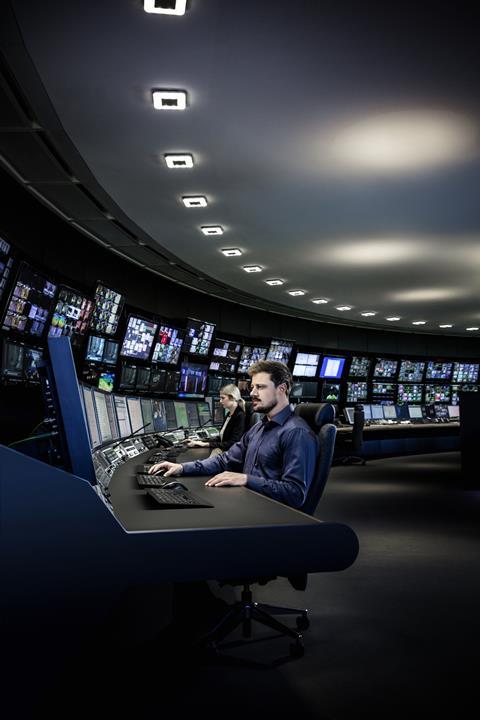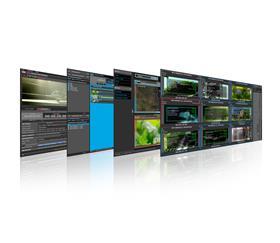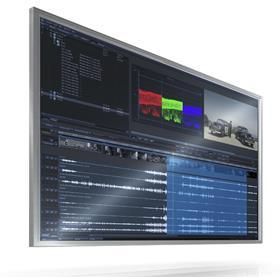Without any doubt, the future of the broadcast industry will be increasingly influenced by the Cloud-based technologies, but today is there still a place for on-premise video servers? And if so, what will these servers look like and how will they operate? Will everything be remote production over IP networks?
If you believe the hype, traditional broadcast operations such as channel playout and other applications are increasingly being replaced by Cloud-ware to provide instant television services at a fraction of the cost of the old hardware-based solution. Whilst I can see this being implemented in some areas of the globe, I still see a need, in the next five years or so, for physical boxes with I/O capabilities, storage and signal processing.

The key driver for this world market is the need for speed – such as in a live production environment where the workflows don’t have time or physical facilities to be uploading and downloading (streaming) content to the Cloud. Huge numbers of facilities around the world simply don’t have the capacity to work like this, yet still harbour the ambition to do so.
Many people’s definition of the Cloud is utopian where it offers limitless bandwidth, zero time delays and infinite storage. For now, for many, this is just a pipe dream, especially in developing regions of the world where IT infrastructure is not sufficiently developed to support these facilities. For at least the next five years there will be a need for conventional server solutions, used in association with other components such as workflow automation and media asset management systems. For now at least, I don’t see these discrete elements immediately morphing into one software bundle, based in the Cloud everywhere in the world, in all applications.
How do users deploy video servers?
In an ideal world, users want to deploy servers today that are familiar to operate in a number of different configurations. Besides the traditional stand-alone installation, some organisations are seeking to establish their own on-premise data centre with appropriate data processing facilities to support their own business operations.

Even those without sufficient external bandwidth provision to the premise can build IP based plant if they choose.
Sometimes called a Private Cloud or Media Data Centre, these facilities run COTS (commercial off the shelf) hardware with proprietary software stacks. Importantly, to provide the best user experience, these systems require features and functions that are as similar as possible to the previously mentioned stand-alone SDI broadcast based systems.
In certain applications – such as channel playout – the organisation needs to use best of breed components where there is tight integration between all the various elements, such as MAM, workflow automation, graphics solutions, switching for audio and video, ancillary data processing and I/O conversion. Whilst the user can select their ‘channel in a box’ manufacturer of choice, they most often have no choice in the various components used within that platform. This creates issues for some users – they might prefer one particular graphics package above all others for example.
So, another approach is to develop a multi configuration system solution which is designed for Cloud deployment amongst a number of others. Here, the challenge is to develop a truly integrated system solution to meet the needs of specific applications – from sports TV production to channel playout – which can be deployed to any third-party data centre, running any public Cloud service, in whichever configuration the customer chooses.
The need for consistency
Whatever the deployment mode, there is a critical need for the technology running through all of these environments to be consistent. Whatever the deployment, staff need to feel familiarity with the man machine interface, performance and the capabilities of the system. Support and other supplier criteria such as training or knowledge transfer needs to be similar throughout to minimise operational costs throughout the facility.
In selecting your technology partner, you need a supplier that has engineered server products with a focus on consistency, and where the core software coding is deployable across the entire range of stand-alone, private and public cloud applications.
As broadcasters and facilities develop their business models, they will naturally want to migrate from one model of operation to another. Just like your favourite trainers, your staff want to feel completely at home and comfortable when they start using the system in a new deployment application.
Consistency & reliability drives development
At Rohde & Schwarz, our challenge is to develop video server product and system solutions that enable our customers to go through the transition at their own pace. We believe in the quality of our engineering and hold to the goal that our customers can build their businesses on our products.

One example of this is the Venice platform which has been re-developed over recent years into a server platform that can be deployed by broadcasters throughout production, news and playout environments. It has been developed as software over COTS hardware with an internal architecture that uses techniques which support virtualised data centre environments. This empowers users to transition their servers from an SDI and SD/HD environment to UHD and SMPTE 2110 IP easily, using all the inherent benefits of COTS hardware and virtualisation.

Another key video product that illustrates this long-term development strategy is Clipster. First and foremost, Clipster is a mastering workstation, however its media processing capabilities are aligned with other R&S server systems, such as Venice. There are three software upgrades scheduled for this year and it remains a cornerstone of our forward-thinking strategy.
As well as developing Clipster in its own right, we are making excellent use of Clipster knowledge across our family of server products. Whether its file processing, WCG, IMF, HDR or multiple resolution processing capabilities, we are integrating core Clipster functionality across our server range.
To conclude, we live in uncertain times. The long-term influence of the Cloud will inevitably influence the future application of server technology within broadcast operations around the world. However, for the next five years at least, video servers will remain a key component of broadcast workflows. The challenge is to select the technology partner that offers the most flexibility, reliability and consistency in their integration within your business.
Tim Felstead is Director of Strategic and Operational Marketing at Rohde & Schwarz





























No comments yet